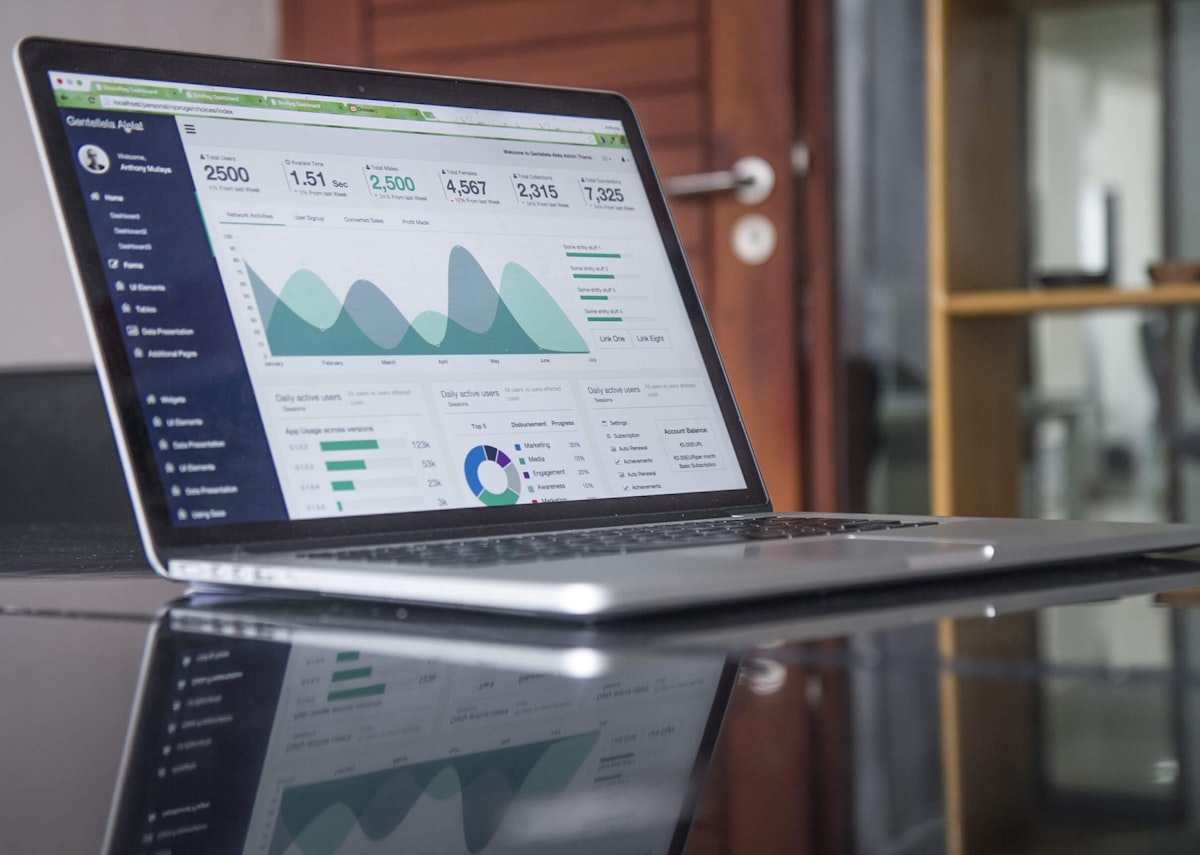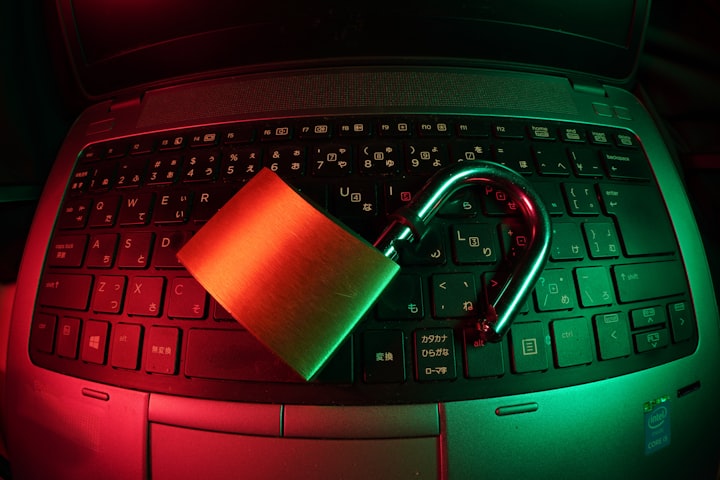Securing Your Digital Self. A Personal Journey to Data Protection.
Personal information can sneak in through various channels, like websites, online transactions, or even interactions with service providers. It's time to take stock of what's where.

In a world where our personal information is like currency, safeguarding our digital identities has never been more crucial. This blog post is here to share some personal insights and practical steps on how to ensure your personal data stays secure, protecting you from cyber threats, identity theft, and the ever-looming risks in the online world.
Taking a Closer Look at Your Digital Trail
Let's start by taking a moment to understand what kind of digital footprint we've left behind. Conduct a little inventory of all the devices in your life – from your trusty laptop and smartphone to that thumb drive you keep in your drawer. Personal information can sneak in through various channels, like websites, online transactions, or even interactions with service providers. It's time to take stock of what's where.
Unraveling the Web of Personal Information
- Reflect on your online activities, from social media to online shopping and financial transactions.
- Recognize where your sensitive information comes from – be it social media platforms, banks, or various service providers.
- Understand how this information gets to you – whether it's through websites, emails, or traditional mail.
- Categorize the types of personal information at play, like passwords, financial details, or any other sensitive data.
- Pinpoint where this information resides – on your devices, in the cloud, or in the digital archives of your trusted service providers.
Control and Permission Check-Up
- Take a moment to review who has access to your personal information.
- Be mindful of the permissions you grant to apps, services, and even those friendly online platforms.
- Regularly tweak and update your privacy settings on your various accounts.
Your Personal Data Security Handbook
Adding Locks to Your Digital Fort
- Put up digital defenses like strong passwords, PINs, or better yet, use biometric authentication where possible.
- Encrypt the data on your devices, making it an extra layer of security for your personal information.
Managing Who Gets What
- Keep a close eye on the permissions you give to apps and services on your devices.
- Use unique and robust passwords for every online account; consider using a trusted password manager for added security.
Keeping the Software Shields Up
- Stay on top of software updates – they often come with crucial security patches.
- Be cautious about downloading apps from trustworthy sources, and always review app permissions before installing.
Data's Bodyguard: Backups
- Regularly back up your essential data – whether it's on external drives or secure cloud services.
- Ensure your backup solutions follow the best practices for data protection.
The Privacy Paradox: Your Concerns Matter
Recent surveys show that many of us share similar concerns about our personal data:
- A sizable percentage believes that both online and offline activities are under constant surveillance by companies and the government.
- The majority of us worry about the potential risks of data collection, often feeling that these outweigh the supposed benefits.
- Many express unease about how companies and the government handle and use our personal information.
Tools for Data Security
As we journey through the maze of personal data security, it's clear that the path to safeguarding our digital lives involves not just knowledge but also the right tools. It's like having a trusty set of tools in a toolbox—each one serving a unique purpose in keeping our digital world safe. Understanding the terrain is crucial, but having these tools at our disposal gives us a sense of control and confidence in protecting what's uniquely ours—our digital footprints. So, let's open this toolbox together and explore some tools that can be our companions in this quest for stronger personal data security.
- Password Managers: Bitwarden and 1Password
- Usage:
- Install the password manager of your choice on your devices.
- Create a master password that is strong and memorable.
- Add your login credentials for various accounts to the password manager.
- The password manager will generate and store complex passwords for each account.
- Use the master password to access the password manager.
- Benefits:
- Eliminates the need to remember multiple passwords.
- Enhances security by using unique and complex passwords for each account.
- Safely stores passwords in an encrypted vault.
- Usage:
- Encryption Software: VeraCrypt, BitLocker (for Windows), FileVault (for macOS)
- Usage:
- Install the encryption software on your device.
- Create an encrypted volume or drive.
- Set up a strong passphrase for access.
- Store sensitive files or the entire drive in the encrypted volume.
- Use the passphrase to decrypt and access the data when needed.
- Benefits:
- Protects sensitive data from unauthorized access, even if the device is stolen.
- Ensures confidentiality of stored information.
- Usage:
- Virtual Private Network (VPN): ExpressVPN, NordVPN, CyberGhost
- Usage:
- Subscribe to a VPN service and install the VPN client on your device.
- Connect to a VPN server of your choice.
- Your internet connection is encrypted, and your IP address is masked.
- Use the VPN whenever you're on public Wi-Fi or want to enhance online privacy.
- Benefits:
- Secures your internet connection from potential eavesdropping.
- Masks your IP address, enhancing online anonymity.
- Usage:
- Two-Factor Authentication (2FA) Apps: Google Authenticator, Authy, Microsoft Authenticator
- Usage:
- Enable 2FA on your accounts that support it (email, social media, etc.).
- Download and install a 2FA app on your mobile device.
- Scan the QR code provided by the service.
- The app generates time-sensitive codes for additional authentication.
- Benefits:
- Adds an extra layer of security beyond just a password.
- Protects accounts even if passwords are compromised.
- Usage:
- Backup Solutions: Backblaze, Acronis True Image, CrashPlan
- Usage:
- Choose a backup solution and install the software on your device.
- Configure the software to back up your important files or the entire system.
- Set up automatic and regular backup schedules.
- Ensure backups are stored securely, either in the cloud or on external drives.
- Benefits:
- Protects against data loss due to device failure, theft, or accidental deletion.
- Enables quick recovery in case of emergencies.
- Usage:
These tools, when used together and consistently, can significantly enhance your personal data security, providing a robust defense against various cyber threats. Always stay informed about updates and best practices for each tool to ensure optimal security.
Conclusion
In our quest to secure our digital havens, we've uncovered the importance of understanding, vigilance, and the right tools. Your digital identity is not just a string of characters or a collection of data points—it's a personal narrative, a story uniquely yours. As we navigate this intricate landscape, remember that every click, every login, and every shared piece of information contributes to the evolving chapters of our digital stories.
The tools we explored aren't just gadgets in the digital toolbox; they are guardians of your virtual realm, helping you weave a narrative of security, privacy, and control. From the strong fortress of password managers to the encrypted sanctuaries of your files, each tool adds another layer to the protection of your personal data.
The privacy paradox—our shared concern about data collection and its potential risks—reminds us that in this interconnected world, our collective voice matters. By adopting these tools and practices, not only do we protect our individual stories, but we also contribute to a collective movement for a safer digital landscape.
So, as you venture forth into the digital wilderness, armed with newfound insights and these trusty tools, remember that your digital story is worth safeguarding. Your journey through the online realm deserves a narrative of empowerment, control, and security. May your digital tale be one of resilience, with each chapter reflecting your commitment to keeping your data safe, your privacy intact, and your digital identity uniquely yours.




